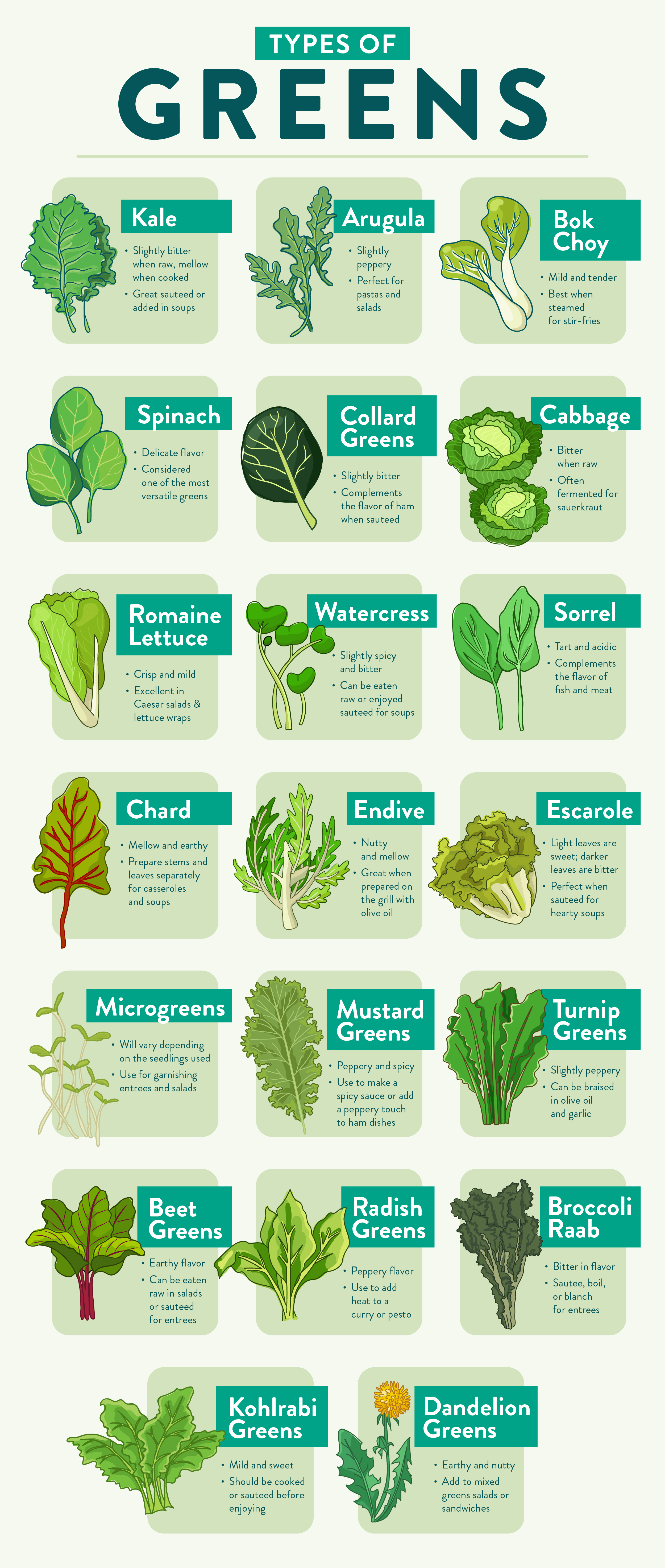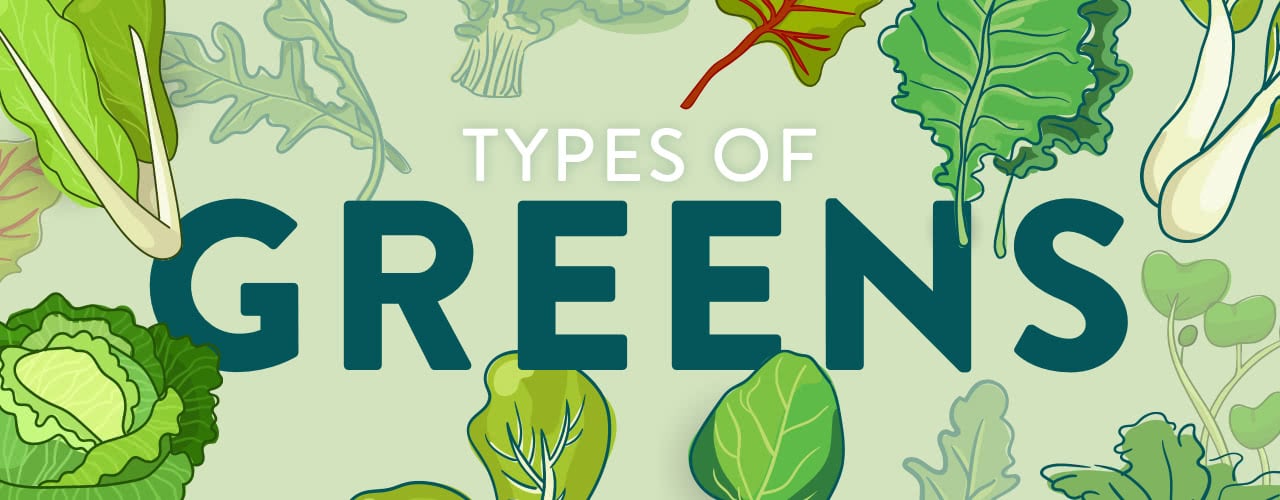
Different Types of Greens
Last updated on 3/11/2020It’s no surprise that leafy greens are an important part of a well-balanced diet. They are full of essential vitamins and minerals that offer a variety of health benefits. They can also be easily incorporated into a wide range of meals to add depth and balance to a dish. We made a list of some leafy greens you may want to try growing in your culinary garden this year to spruce up your menu.
Shop All VegetablesTypes of Greens
Some leafy greens are very similar to each other and can be used interchangeably, and others have distinctly different flavor profiles. Learn more about the most popular types of greens, what sets them apart, and when they are in season.
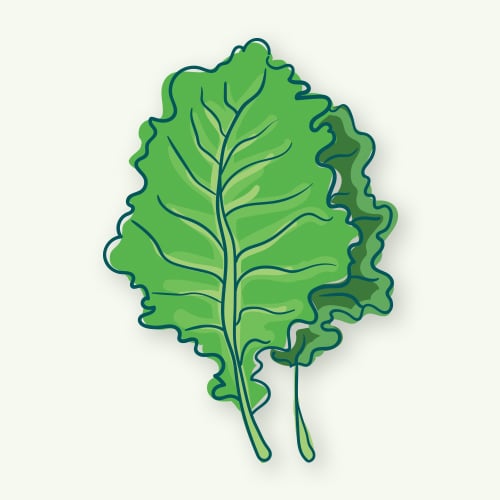
1. Kale
There are several different types of kale that vary in shape and color. They are typically dark green and feature a strong stem in the middle with leaves that are curly at the ends.
- What Does Kale Taste Like? Slightly bitter when raw, mellow when cooked
- Origin of Kale: Mediterranean and Asia Minor
- Growing Season of Kale: Late summer through fall
How to Use Kale
Kale can be eaten raw in salads or cooked to serve alongside entrees. Unlike many leafy greens, it won’t shrink back too much when cooked. Kale is often sauteed, cooked in soup, and roasted to serve as kale chips.
Benefits of Kale
Kale is extremely high in nutrients, such as Vitamin K, Vitamin A, Vitamin C, and antioxidants like Lutein and Beta-Carotene. You’ll want to consume kale raw to get the most nutrients out of the leaf, as it does lose some of its nutritional value when cooked.
Back to Top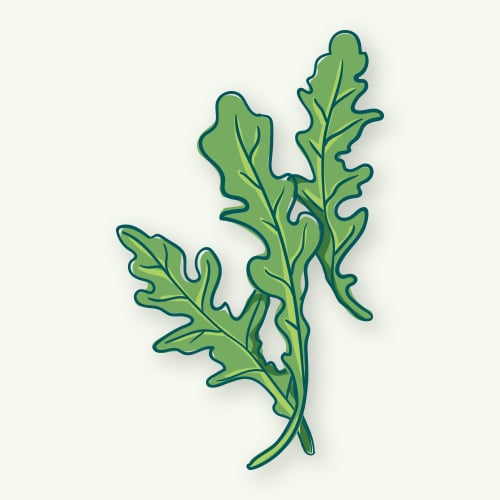
2. Arugula
Often referred to as “rocket” or “rucola” in Britain and Australia, arugula is a leafy green originating from the Brassicaceae family which includes broccoli, cauliflower, and mustard greens.
- What Does Arugula Taste Like? Slight peppery flavor
- Origin of Arugula: Mediterranean; popular in Italian cuisine
- Growing Season of Arugula: Early spring into early summer
How to Use Arugula
Because of its peppery flavor, arugula is often used raw to to spice up salads or even added on top of pizza slices. It can also be sauteed to add a deep dimension of flavor to pasta dishes and soups.
Benefits of Arugula
Arugula is packed with dietary nitrates, pro-Vitamin A carotenoids, Vitamin K, and folate. It is thought to help reduce blood pressure as well.
Back to Top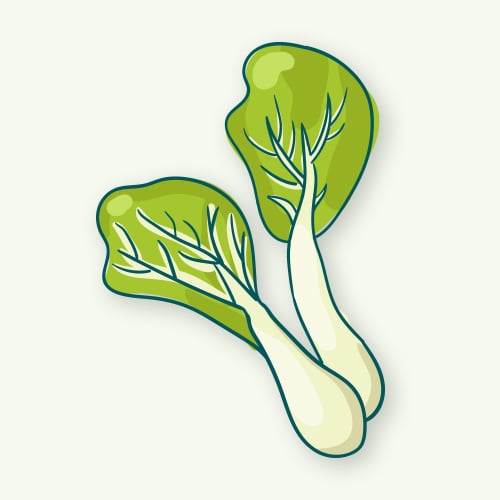
3. Bok Choy
Bok choy has a bulbous white stem, similar to celery, that grows into a cluster of dark green leaves. It is often called Chinese cabbage, pak choi, or white mustard cabbage.
- What Does Bok Choy Taste Like? Mild and tender flavor, especially when young
- Origin of Bok Choy: China
- Growing Season of Bok Choy: Late summer into early winter
How to Use Bok Choy
Bok choy is often cooked for stir-fries and soups. Baby bok choy can be cooked whole, while larger bok choy heads should be broken apart for even cooking. The stems will require a longer cooking time.
Benefits of Bok Choy
The main health benefit of bok choy is that it contains selenium with is an important mineral that aids cognitive function, thyroid function and metabolism, immunity, and possible cancer prevention.
Back to Top
4. Spinach
Spinach has rounded dark-green leaves. It is one of the most versatile and used leafy greens available.
- What Does Spinach Taste Like? Delicate and subtle flavor
- Origin of Spinach: Mediterranean and China
- Growing Season of Spinach: Late winter into early spring; Late summer into early fall
How to Use Spinach
Because of its mild flavor, spinach complements a variety of dishes. It can be eaten raw as a salad or cooked for entrees. Add it to an omelet or phyllo pastry, in a creamy pasta dish, or even to a fruit smoothie. It is important to note that the volume will reduce drastically when cooked so be sure to use more than you think you need.
Benefits of Spinach
Spinach is packed with nutrients, such as Vitamin K, Vitamin A, iron, and magnesium. It is one of the most protein-rich vegetables of the greens. It also has folate, which is essential in red blood cell production and aids in fetus development during pregnancy.
Back to Top
5. Collard Greens
Whether you call them collards, collard greens, borekale, or tree cabbage, these plants feature thick, dark leafy greens that are loaded with nutrients.
- What Does Collard Greens Taste Like? Slightly bitter in flavor
- Origin of Collard Greens: Mediterranean; most common in American Southern cooking
- Growing Season of Collard Greens: Fall to early winter
How to Use Collard Greens
You’ll typically find collard greens braised or steamed next to a pork dish. It can also be used in stir-fries, slaws, and sandwiches. They can be eaten raw, however, the leaves are rather tough so most chefs prefer to cook them up before serving.
Benefits of Collard Greens
Collard greens are a great source of Vitamin A, Vitamin C, calcium, and folate. It is also rich in Vitamin K, packing the most per leaf out of the greens, which is known for aiding in blood clotting.
Back to Top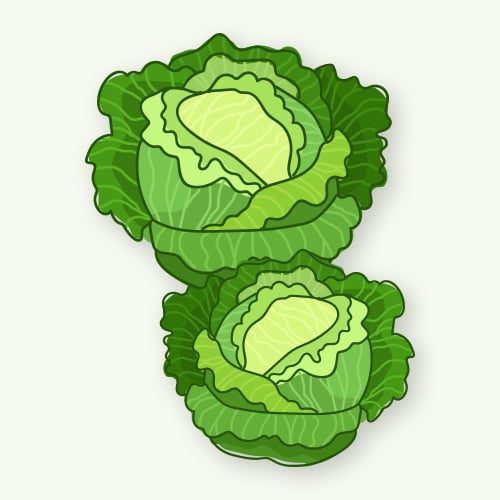
6. Cabbage
Part of the Brassicaceae family, cabbage is related to brussel sprouts, broccoli, and kale. The leaf clusters can grow green, white, or purple in color.
- What Does Cabbage Taste Like? Bitter when raw, more mild when cooked
- Origin of Cabbage: Europe and China; often cultivated across the United States
- Growing Season of Cabbage: Spring and fall
How to Use Cabbage
Cabbages are usually sauteed or boiled for soups and stir-fries. They can also be cooked to make stuffed cabbage or cabbage rolls for low-carb dinner options. It is often fermented to make sauerkraut for German and Pennsylvania Dutch dishes, and to make kimchi for Korean dishes.
Benefits of Cabbage
Cabbages offer the benefits of Vitamin K, Vitamin C, folate, magneses, and multiple antioxidants that help reduce inflammation. They are thought to contain properties that can help prevent lung and esophageal cancer. When fermented into sauerkraut, it can also improve digestion and immune health.
Back to Top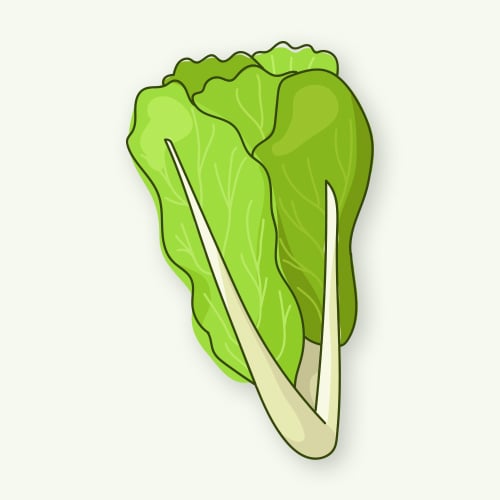
7. Romaine Lettuce
Romaine lettuce leaves are known for their dark green edges and the firm rib in the center of the leaf that provides a nice crunch.
- What Does Romaine Lettuce Taste Like? Crisp and mild in flavor
- Origin of Romaine Lettuce: Greek Islands and Turkey
- Growing Season of Romaine Lettuce: Spring and early summer
How to Use Romaine Lettuce
Romaine lettuce is usually the main ingredient of a salad, especially Caesar salads. They can also be used to top off sandwiches or for lettuce wraps to replace carb consumption.
Benefits of Romaine Lettuce
You’ll find the most nutrients in the darker and thicker leaves of a head of romaine lettuce. They feature a good helping of Vitamin A and K, and they are thought to help reduce the risk of heart disease.
Back to Top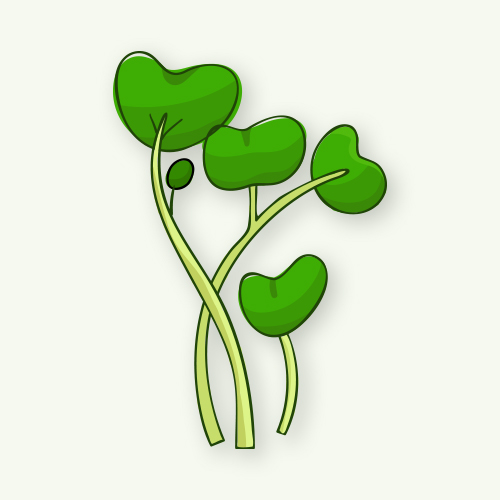
8. Watercress
Watercress is an aquatic plant that produces little rounded leaves. Part of the Brassicaceae family, it is similar in flavor profile to arugula and mustard greens.
- What Does Watercress Taste Like? Slightly spicy and bitter
- Origin of Watercress: Europe and Western Asia, can also be found growing in the United States
- Growing Season of Watercress: Spring
How to Use Watercress
You can eat watercress raw or cook it up for your entree. When raw, this green adds a spicy kick to any salad. It is often sauteed or cooked as well as a side for entrees or an addition in soups.
Benefits of Watercress
Watercress contains calcium, magnesium, and potassium, along with a large amount of Vitamin K and antioxidants. It has been used for its medicinal value for centuries and is often used in herbal medical remedies across the globe.
Back to Top
9. Sorrel
Featuring a narrow and spade-like leaf, sorrel can be sometimes confused with mature spinach. Some of its alternative names include sour grass, spinach dock, and sour dock.
- What Does Sorrel Taste Like? Tart and acidic in flavor
- Origin of Sorrel: Europe and Central Asia; it can be hard to find in America
- Growing Season of Sorrel: Early summer
How to Use Sorrel
Sorrel can be eaten raw and will often be in mixed greens salad blends. When cooked, it often takes on a lemony flavor that complements the flavor of fish. It can be added to soups and stews as well.
Benefits of Sorrel
Sorrel is high in Vitamin C, Vitamin A, folate, potassium, calcium, phosphorus, and iron. It is also a great source of fiber and proteins, making it a powerhouse in nutritional value.
Back to Top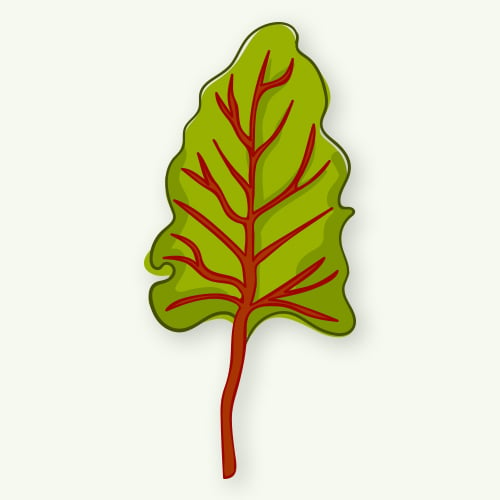
10. Swiss Chard
There are many variations of chards available but all will feature a dark leaf and a hefty stalk in the center. The stalk can grow in a variety of colors so you’ll often find Swiss chard under the name rainbow chard, red chard, yellow chard, or white chard. It can also be called leaf beet, sea kale, or silverbeet.
- What Does Swiss Chard Taste Like? Mellow and earthy flavor, stalks are slightly sweet
- Origin of Swiss Chard: Native to Southern Europe; commonly used in Mediterranean cuisine
- Growing Season of Swiss Chard: Spring and fall
How to Use Swiss Chard
The stems of Swiss chard take longer to cook, so you will want to strip them from the leaves to prevent the leaves from overcooking. Once sauteed or steamed, Swiss chard makes a great addition to creamy soups, hearty casseroles, or zesty tacos. Although the leaves can be tough when consumed raw, the stems can provide a crunchy snack.
Benefits of Swiss Chard
Swiss chard is rich in Vitamin A, Vitamin K, and Vitamin C, as well as potassium, manganese, and syringic acid, which may help lower blood sugar levels.
Back to Top
11. Endive
Endive, pronounced “N-dive”, is part of the Cichorium family that includes dandelions and sunflowers. It can be somewhat difficult to grow. You’ll either find it looking like a small head of lettuce known as witlof or Belgium endive, or with curly ends known as frisee.
- What Does Endive Taste Like? Crisp, nutty and mellow in flavor
- Origin of Endive: South Asia and Mediterranean; often associated with Belgium
- Growing Season of Endive: Fall
How to Use Endive
Curly endive is usually added to frisee salads to add texture alongside other leafy greens. Belgium endive will more often be roasted or grilled with balsamic and olive oil, bringing out its naturally nutty flavor.
Benefits of Endive
Endive is a good source of Vitamin A and Vitamin K, as well as folate and kaempferol, which is an antioxidant that is known for reducing inflammation.
Back to Top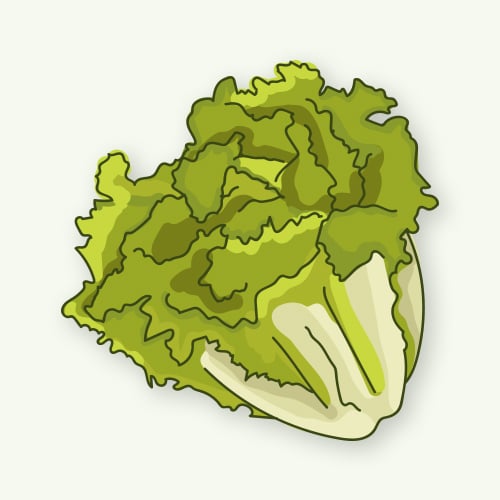
12. Escarole
Escarole is known for its dark and thick leaves. The leaves are bunched up together, making it resemble a head of lettuce.
- What Does Escarole Taste Like? Light leaves offer sweet flavor while darker leaves are more bitter
- Origin of Escarole: East Indies; widely cultivated in England
- Growing Season of Escarole: Spring and late fall into early winter
How to Use Escarole
Because of its slight bitter flavor when raw, escarole adds a robust flavor to salads and sandwiches. That flavor mellows out when the leaves are cooked, so they are often sauteed and added to hearty soups.
Benefits of Escarole
Escarole is often desired because of its high fiber content which aids digestion. It features a high percentage of Vitamin A, Vitamin C, calcium, and iron as well.
Back to Top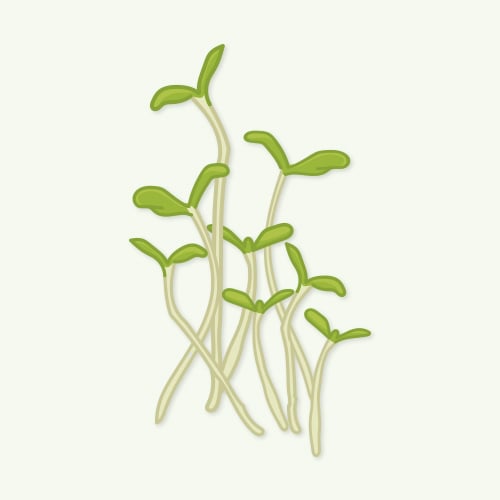
13. Microgreens
Microgreens are not a specific type of green, but actually the immature stage of a variety of greens and herbs. You’ll typically find the seedlings of watercress, radishes, arugula, lettuce, endives, and more in a microgreen mix. They are typically cut when they have reached 1-3 inches in height.
- What Does Microgreens Taste Like? Will vary depending on the seedlings used
- Origin of Microgreens: United States; started in Southern California in the 1990s
- Growing Season of Microgreens: Indoors year round
How to Use Microgreens
The primary purpose of using microgreens is to garnish plates for an upscale food presentation. They can be sprinkled on top of salads, soups, or steak dinners to add a finishing touch.
Benefits of Microgreens
Microgreens actually contain higher levels of nutrients than their mature versions, sometimes 40 times more. They are a great source of Vitamin C, Vitamin E, and Vitamin K. The list of nutrients will vary depending on the seedling used.
Back to Top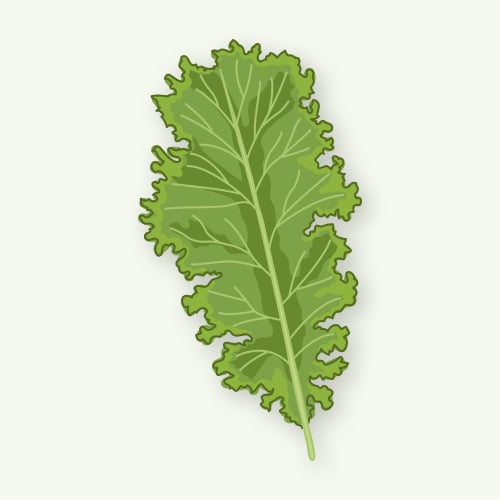
14. Mustard Greens
Mustard greens, also known as curled mustard or green-leafed mustard, can be easily identified by its frilled edges. A few different varieties of mustard greens do exist, including American and Asian varieties.
- What Does Mustard Greens Taste Like? Peppery and spicy
- Origin of Mustard Greens: North America, Europe, and Asia; highly used in Southern cuisine
- Growing Season of Mustard Greens: Fall
How to Use Mustard Greens
A staple in Southern cooking, mustard greens are often cooked down and served with ham dishes. They become less spicy the longer they are cooked but can still add a bit of heat to hearty dishes. Mustard greens also pair well with acids like lemon juice or vinegar, so you’ll find them with Asian-inspired fish dishes. The most popular use of mustard greens is to make zesty mustard sauces, while the seeds are used to make the mustard condiment we are familiar with.
Benefits of Mustard Greens
Mustard greens are sought after for the nutrients that come with their spicy flavor. They are a great source of calcium, folic acid, magnesium, and Vitamin K. They promote bone healthy and energy-boosting qualities.
Back to Top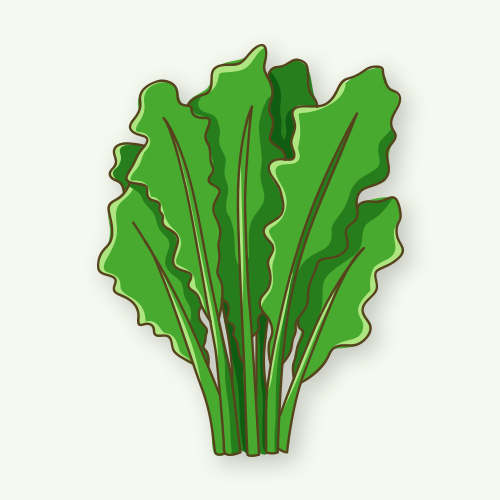
15. Turnip Greens
Most people are familiar with turnips, but some don’t realize that the greens at the top are edible as well. These long-stemmed greens are not just useful for pulling turnips out of the ground, they are also good for you.
- What Does Turnip Greens Taste Like? Slightly peppery in flavor
- Origin of Turnip Greens: Middle and Eastern Asia
- Growing Season of Turnip Greens: Early summer and late fall
How to Use Turnip Greens
Cook up turnip greens in a similar way to collard greens. They can be braised or sauteed to serve with ham shanks and potato, or they can be placed in a slow cooker to make a rich and spicy soup. Turnip greens are not often enjoyed raw due to their prickly texture.
Benefits of Turnip Greens
Surprisingly enough, turnip greens have more nutrients than turnip bulbs. Because they are cruciferous, turnip greens have nutrients that may help reduce the risk of heart disease, inflammation, and cancer. They are also packed with antioxidants, calcium, manganese, Vitamin A, Vitamin C, and Vitamin K.
Back to Top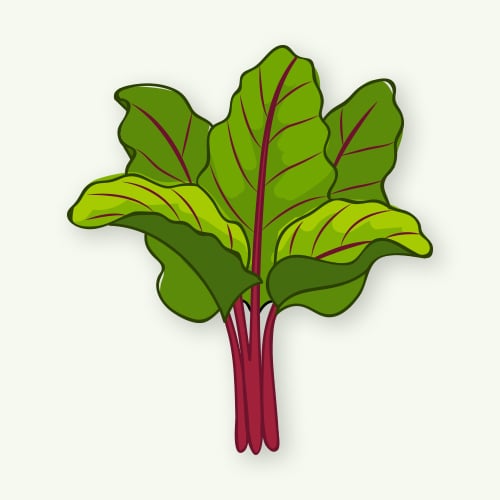
16. Beet Greens
Just like turnip greens, beet greens are often discarded. However, they are edible and can be used in the same way one would use spinach. They feature a vibrant red stalk and dark leaves with red veins at the end that offer a great pop of color to any dish.
- What Does Beet Greens Taste Like? Earthy flavor
- Origin of Beet Greens: Middle East
- Growing Season of Beet Greens: Spring and fall
How to Use Beet Greens
Beet greens are quite tender and can be eaten raw in salads with a hint of lemon or vinaigrette. When they are sauteed or steamed, they retain that dark red color in their stalks, making them great for soups and side dishes.
Benefits of Beet Greens
Beet greens are known for being rich in potassium and fiber, as well as Beta-Carotene and Lutein, which may reduce the risk of eye-disorders. They are also a great source of calcium, Vitamin A, and Vitamin K. Additionally, the beet root can be used to help flight the flu during colder seasons.
Back to Top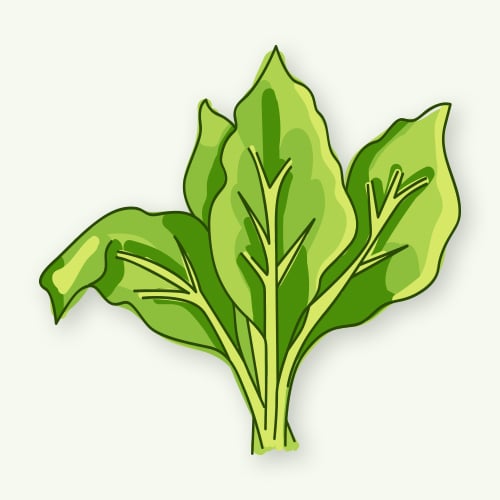
17. Radish Greens
Although the leaves can be rather prickly, radish greens can add a depth of flavor to your favorite meals and should not be discarded. Although similar to the flavor profile and texture of turnip greens, they feature a much shorter stalk and smaller leaf in comparison.
- What Does Radish Greens Taste Like? Peppery flavor
- Origin of Radish Greens: Mediterranean and Central Asia
- Growing Season of Radish Greens: Early spring into summer
How to Use Radish Greens
Radish greens are not usually consumed raw due to their texture, but they can be pureed to make a zesty pesto. Cooked radish greens can be extremely versatile. Roast them up to make a spicy side to your entree or sautee them in a bold stir-fry. They can be enjoyed in creamy soups and hearty quiches.
Benefits of Radish Greens
Radish greens are high in fiber, which aids with digestion, and iron, which help combat fatigue and anemia. You can also find Vitamin A, Vitamin C, Vitamin K, and antioxidants in radish leaves as well.
Back to Top
18. Broccoli Rabe
Broccoli rabe, pronounced "rob", isn’t actually from the broccoli family even though it bears a resemblance. It has a long sturdy stalk with dark-green leaves and florets at the top. This green is actually part of the turnip family and is often called turnip broccoli, rapini, italian turnip, broccoli raab, and broccoletti di rapa.
- What Does Broccoli Rabe Taste Like? Bitter in flavor
- Origin of Broccoli Rabe: China; popular in Italian cuisine
- Growing Season of Broccoli Rabe: Early spring
How to Use Broccoli Rabe
You can make a delightful dish with broccoli rabe by sauteing, blanching, boiling, or steaming it. Use the same methods you would use with broccoli to cook broccoli rabe. You’ll often find broccoli rabe sauteed with garlic, onion, and parmesan.
Benefits of Broccoli Rabe
Broccoli rabe is packed with potassium and fiber to aid with digestion and help you feel fuller for longer. Its pantothenic acid can also help break down proteins and fats to rebuild muscle and tissue.
Back to Top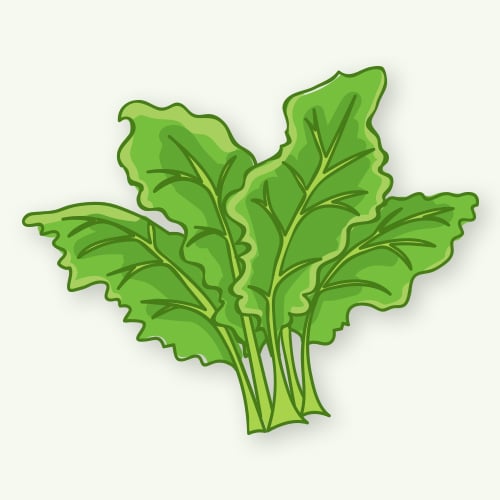
19. Kohlrabi Greens
Kohlrabi greens, pronounced "kowl-raa-bee", protrude in various directions off a large white or purple bulb. Often called a cabbage turnip, the stalk color will match the original bulb color and feature a large green leaf at the top.
- What Does Kohlrabi Greens Taste Like? Mild and sweet; Similar to broccoli
- Origin of Kohlrabi Greens: Germany and Northern Europe
- Growing Season of Kohlrabi Greens: Spring and fall
How to Use Kohlrabi Greens
Although the bulb of the kohlrabi plant can be eaten raw or cooked, the leaves should be cooked to be enjoyed. The leaves are often separated from the ribs and sauteed oil and garlic like collard greens would be prepared.
Benefits of Kohlrabi Greens
As a cruciferous plant, kohlrabi greens are packed with antioxidants that help prevent cancers and heart disease. They are a great source of fiber, potassium, Vitamin C, and Vitamin B6, which is known to improve immune health.
Back to Top
20. Dandelion Greens
Did you know that every part of a dandelion is edible, including the flower, roots, and stem? Although dandelions are considered a weed, their leaves are quite nutritious. It is advised to purchase dandelion greens from either a grocery store or farmers market to avoid accidentally consuming harmful pesticides.
- What Does Dandelion Greens Taste Like? Earthy and nutty in flavor
- Origin of Dandelion Greens: Europe
- Growing Season of Dandelion Greens: Early spring and fall
How to Use Dandelion Greens
You can eat dandelion greens raw in salads and sandwiches or sautee them in oil to make a casserole. Many chefs use dandelion greens in the place of spinach to add more color to pasta dishes and a unique touch.
Benefits of Dandelion Greens
Unlike kale, the nutritional value of dandelion greens does not diminish when it is cooked. Dandelion greens are full of Vitamin E, Vitamin A, Vitamin C, and folate. They also have a substantial amount of calcium, iron, and magnesium in them.
Back to TopSo if you’re starting a farmers market stand, be sure to stock up on the greens that your customers will be looking for! Feel free to switch up the greens in your recipes to add a richer depth of flavor and add a boost of vitamins and minerals.
Printable Version
